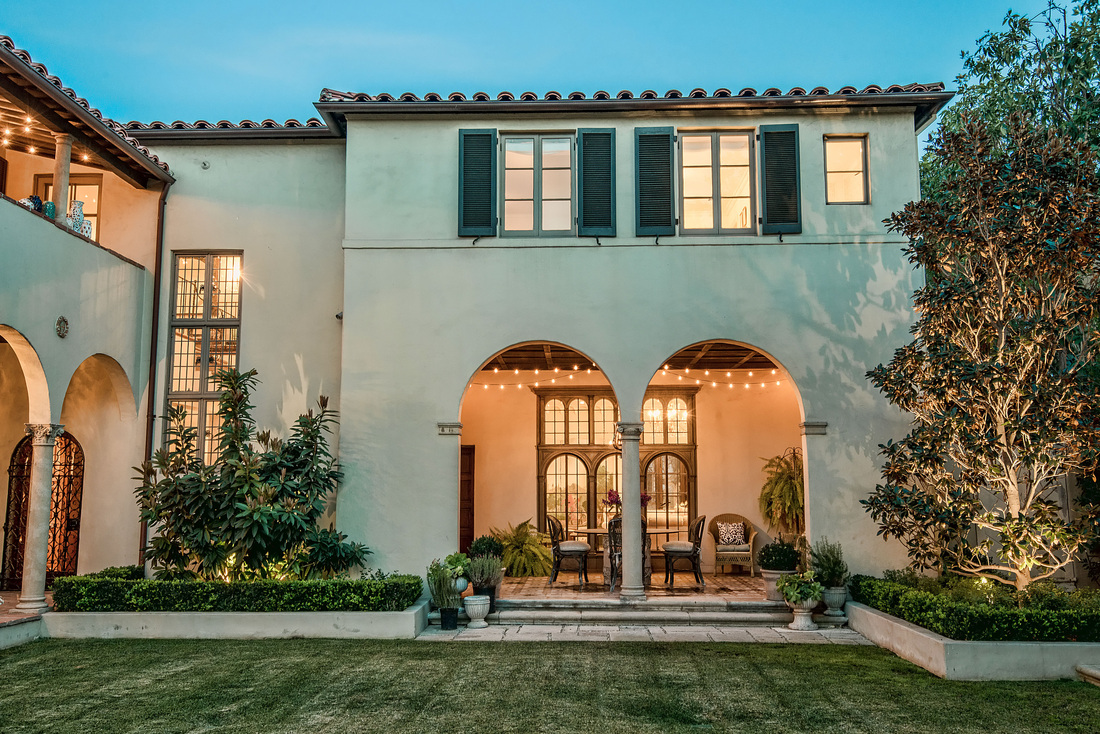CLASSIC HOMES of LOS ANGELES by Douglas Woods
Copyright 2010 Rizzoli International Publications, Inc.
A rchitect Gordon Kaufman made a name for himself as a partner in the firm Johnson, Kaufmann & Coate. After the firm dissolved, Roland Coate, Reginald Johnson, and Kaufmann continued to enjoy productive careers as individual practitioners. On his own, Kaufmann began building his signature Tuscan-inspired mansions in 1925, notably the Theodore Eisner House, which set the tone for many similar homes he would design.
ABOVE AND RIGHT This logia and living room: clearly the ideal indoor-outdoor room.
The Baruh House, designed for Zellerbach Paper director J.Y. Baruh and his wife, Alma, in Hancock Park, is a fitting solution to the problem he saw in obtaining privacy in the city. The public face of the house has a flat and protective presence, with small shuttered windows and an under-stated corner entrance. The house guards its inner garden and the rooms that open to it. The inner spaces are voluminous and mostly spare in detail. The living room is enlivened by arched moldings and opens to a colonnade that runs the length of the garden. Above it, a second-story loggia provides and alternative to a porch.
White plaster dominates that house inside and out except for the paneled formal dining room. As is often the case, the lot dictated the ultimate design. In this case, an L shape was employed over the more traditional Mediterranean courtyard, still achieving the effect of being transported somewhere tranquil, outside the city.
Kaufmann's later commissions were of a much grander scale. He designed, among other landmarks, the Los Angeles Times Building, Scripps College in Claremont (one of the most beautiful campuses anywhere), and Hoover Dam.
Kaufmann's later commissions were of a much grander scale. He designed, among other landmarks, the Los Angeles Times Building, Scripps College in Claremont (one of the most beautiful campuses anywhere), and Hoover Dam.
ABOVE: The kitchen
ABOVE, RIGHT: Wrought iron banisters and hand troweled arches typify the quiet glamour of the Mediterranean house.
The details in the paneling of the dining room were hidden under decades of darkened lacquer until the current owners oversaw an arduous restoration. Dennis Smith Construction, Inc. renovated this home from 2007-2009








